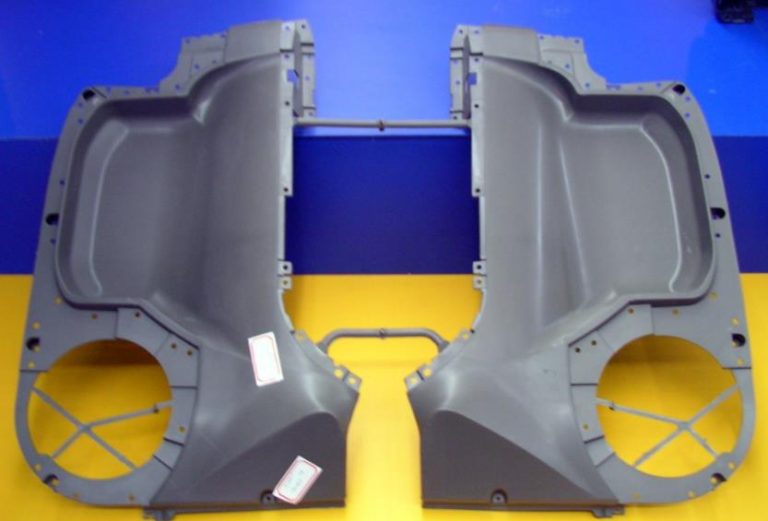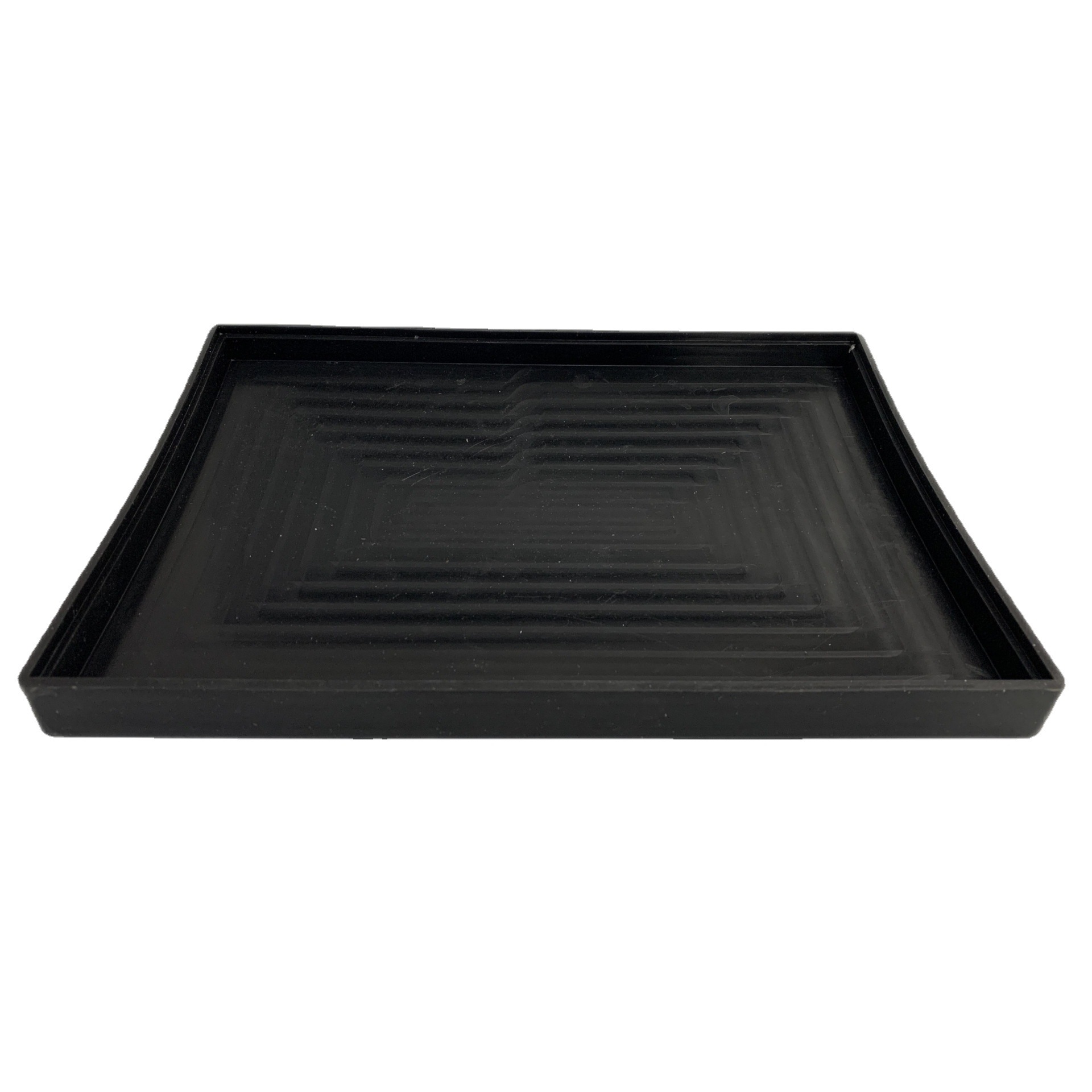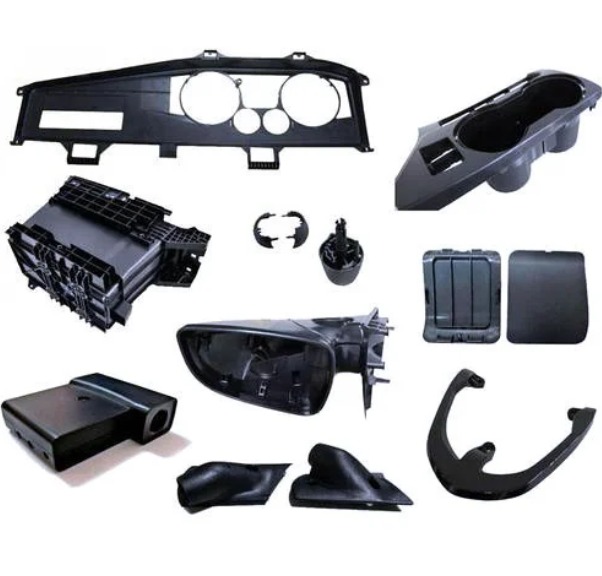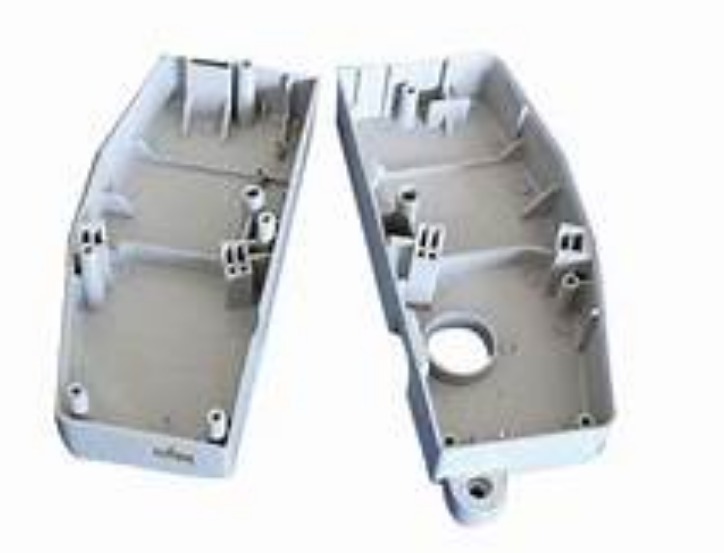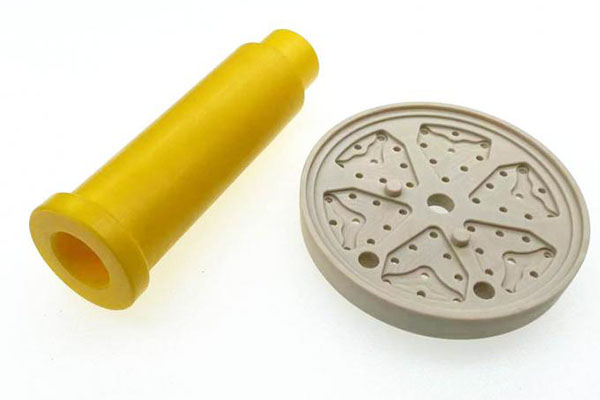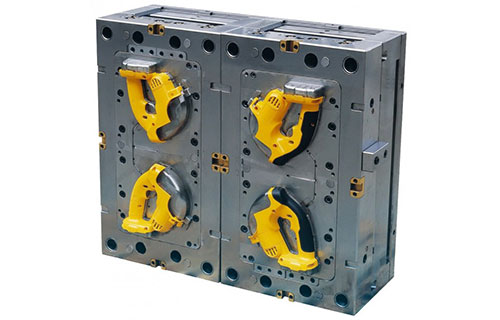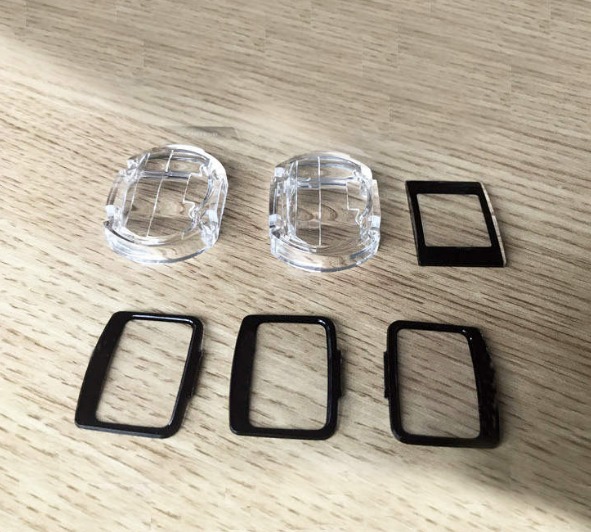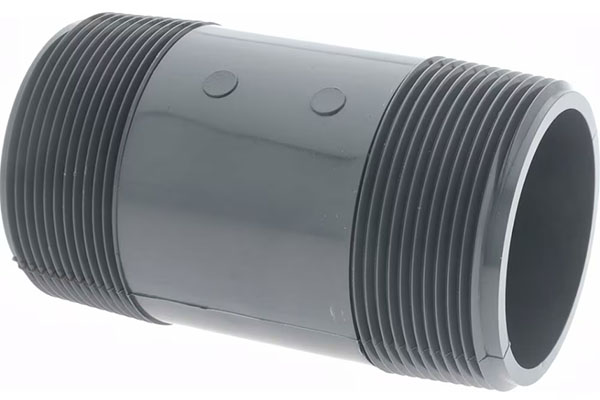Introduction
Plastic mold molding is a cornerstone of the modern manufacturing industry, playing a pivotal role in the production of a vast array of products that permeate every aspect of our daily lives. From the sleek casings of our smartphones to the sturdy components of automotive interiors, plastic molded parts have become indispensable due to their versatility, cost - effectiveness, and design flexibility.
The importance of plastic mold molding lies in its ability to transform raw plastic materials into highly precise, complex - shaped products with high production efficiency. It enables mass production, which is crucial for meeting the large - scale demands of various industries. For instance, in the consumer electronics industry, where billions of devices are produced annually, plastic mold molding ensures that each component, such as a phone's housing or a laptop's keyboard frame, is consistent in quality and dimensions.
1. Material Selection
1.1 Types of Plastic Materials
There is a wide variety of plastic materials available in the market, each with its own unique set of properties. ABS (Acrylonitrile Butadiene Styrene) is a popular choice known for its excellent impact resistance, which makes it suitable for products that may be subject to physical stress, such as electronic device housings. It also has good dimensional stability, meaning it maintains its shape well over time. For example, the outer shells of many laptops are made of ABS due to its ability to protect the internal components from accidental drops and knocks. Additionally, ABS has relatively good heat resistance, with a heat - distortion temperature typically in the range of 93 - 118°C.
PP (Polypropylene) is another common plastic material. It is lightweight, with a density of around 0.9 - 0.91 g/cm³, which makes it an ideal choice for applications where weight reduction is crucial, like in the automotive industry for interior components. PP also has good chemical resistance, being able to withstand exposure to many common chemicals without significant degradation. It can be used in containers for storing various substances. Moreover, it has a relatively high melting point, around 160 - 170°C, which allows it to be used in some applications that involve moderate heat.
PE (Polyethylene) comes in different forms, such as HDPE (High - Density Polyethylene) and LDPE (Low - Density Polyethylene). HDPE is known for its high strength, rigidity, and excellent chemical resistance. It is often used in the production of pipes for water and gas transportation due to its durability and ability to resist corrosion. LDPE, on the other hand, is more flexible and has better transparency, making it suitable for applications like plastic bags and food packaging films. It has a lower density compared to HDPE, around 0.91 - 0.94 g/cm³, and is more pliable, which allows for easy shaping into thin films.
1.2 Compatibility with the Product
Selecting the right plastic material is highly dependent on the product's intended use and performance requirements. For products that will be used in high - temperature environments, such as kitchen utensils or components in automotive engines, materials with high heat resistance should be chosen. For instance, PPS (Polyphenylene Sulfide) has a high heat - distortion temperature of up to 260°C and is often used in automotive parts that are exposed to high - temperature conditions, like under - the - hood components.
If the product needs to have good chemical resistance, materials like PTFE (Polytetrafluoroethylene), which is highly resistant to a wide range of chemicals, are more appropriate. PTFE is commonly used in chemical processing equipment, such as pipes and valves, where it can withstand the corrosive effects of strong acids and bases.
For products that require high impact resistance, as mentioned before, ABS is a great option. In the case of sports equipment, like helmets, the high impact - absorbing properties of ABS can protect the user from potential head injuries during impacts. Additionally, if the product needs to be lightweight, materials like PP or LDPE can be considered, especially when combined with other design factors to ensure sufficient strength. For example, in the aerospace industry, where every gram matters, lightweight plastic components made from materials like PP or LDPE, when properly engineered, can contribute to fuel efficiency and overall performance improvements.
2. Mold Design
2.1 Structural Design
The structural design of a plastic mold is the blueprint that determines the overall functionality and performance of the molding process. Cavity and Core: The cavity is the female part of the mold where the plastic material takes shape, while the core is the male part. Their precise design and manufacturing are crucial. For example, in the production of a plastic bottle, the cavity defines the outer shape of the bottle, and the core determines the inner hollow part. The surface finish of the cavity and core directly affects the surface quality of the molded product. A smooth surface finish, usually with a roughness value of less than 0.8μm in high - end applications, can result in a shiny and defect - free product surface.
Demolding Mechanism: A well - designed demolding mechanism is essential for removing the molded product from the mold without causing damage. There are various demolding methods, such as push - rod demolding, sleeve demolding, and side - action demolding. In push - rod demolding, push - rods are used to push the product out of the cavity. The layout and diameter of the push - rods need to be carefully calculated. If the push - rods are too small in diameter or not evenly distributed, they may cause uneven pressure on the product during demolding, leading to deformation or breakage. For a small plastic component with a diameter of 20mm, typically, 3 - 4 push - rods with a diameter of 2 - 3mm evenly distributed around the perimeter may be sufficient to ensure smooth demolding.
2.2 Draft Angle
The draft angle, also known as the taper angle, is an often - overlooked but extremely important factor in plastic mold design. Its importance lies in facilitating the easy removal of the molded part from the mold. Without an appropriate draft angle, the plastic part may stick to the mold cavity or core, causing difficulties in demolding and potentially damaging the product or the mold.
Determining the right draft angle depends on several factors. The type of plastic material is a key consideration. For example, materials with high shrinkage rates, like PP, generally require a larger draft angle. Usually, for PP, a draft angle of 0.5 - 1.5 degrees is recommended. The shape of the product also matters. For products with deep cavities or long and thin walls, a larger draft angle is needed. If a product has a cavity depth of 50mm, a draft angle of at least 1 degree should be provided to ensure smooth demolding. Additionally, the surface finish requirements of the product can influence the draft angle. If a very high - quality surface finish is required, a slightly larger draft angle may be used to prevent any surface defects during demolding.
2.3 Ventilation Design
Ventilation design in plastic mold molding is crucial for several reasons. During the injection molding process, as the plastic material fills the mold cavity, the air inside the cavity needs to be effectively removed. If the air cannot escape in time, it can cause a variety of problems. For instance, trapped air can lead to short - shots, where the plastic does not fully fill the mold cavity, or it can cause burn marks on the product surface due to the compression and heating of the trapped air.
The key points in ventilation design include the location and size of the vents. Vents are typically placed at the end of the flow path of the plastic material in the mold cavity, where the air is most likely to accumulate. The size of the vents needs to be carefully controlled. If the vents are too large, plastic material may leak out, which is called flash. On the other hand, if the vents are too small, the air cannot escape quickly enough. In general, for most common plastic molding applications, the vent width can range from 0.02 - 0.05mm, and the length can be around 3 - 5mm. Some molds also use porous materials or vent channels within the mold structure to improve ventilation efficiency, especially in complex - shaped molds where traditional venting methods may not be sufficient.
3. Molding Process Parameters
3.1 Temperature Control
Temperature control is a critical aspect of plastic mold molding, significantly influencing the quality and integrity of the final product.
Barrel Temperature: The barrel temperature, where the plastic material is melted and plasticized, plays a fundamental role. Different plastic materials have distinct melting temperature ranges. For example, ABS typically has a melting range of 210 - 240°C. If the barrel temperature is set too low for ABS, the plastic may not fully melt, leading to inconsistent flow during injection. This can result in defects such as short - shots, where the mold cavity is not completely filled, or a rough surface finish on the molded product. On the other hand, if the temperature is set too high, it can cause thermal degradation of the plastic. For instance, the material may discolor, and its mechanical properties may be compromised, becoming brittle and losing its impact resistance. To control the barrel temperature accurately, modern injection molding machines are equipped with temperature - control systems. These systems often use thermocouples to measure the temperature at different zones along the barrel and adjust the heating elements accordingly.
Mold Temperature: The mold temperature affects the cooling rate of the plastic once it is injected into the mold cavity. A proper mold temperature is crucial for ensuring uniform cooling and dimensional stability of the product. For materials like PP, a mold temperature in the range of 30 - 60°C is commonly recommended. If the mold temperature is too low, the plastic cools too quickly, which can cause high internal stresses in the product. This may lead to warping or cracking of the molded part. For example, in the production of large - sized PP plastic containers, if the mold temperature is not maintained within the appropriate range, the container may warp during cooling, making it unusable. Conversely, if the mold temperature is too high, the cooling time will be extended, reducing production efficiency. Additionally, it may cause the plastic to stick to the mold, making demolding difficult. To control the mold temperature, methods such as water - cooled channels within the mold are commonly used. The flow rate and temperature of the cooling water can be adjusted to achieve the desired mold temperature.
3.2 Pressure Settings
Injection Pressure: Injection pressure is the force applied to push the molten plastic from the barrel into the mold cavity. Its primary function is to overcome the flow resistance of the plastic material as it travels through the runner system (the channels that connect the injection nozzle to the mold cavity) and fills the intricate shapes of the mold. For products with complex geometries or long flow paths, a higher injection pressure may be required. For example, when molding a small, detailed plastic component with many thin - walled sections and narrow channels, a relatively high injection pressure, perhaps in the range of 100 - 150 MPa, might be needed to ensure complete filling of the mold. However, if the injection pressure is set too high, it can cause several problems. It may lead to flash, where the plastic leaks out of the mold cavity along the parting lines or around the cores, resulting in unwanted excess material on the product. High injection pressure can also increase the internal stresses within the product, which may cause the product to warp or crack during cooling or later use.
3.3 Injection Speed
Injection speed refers to how quickly the molten plastic is injected into the mold cavity. It has a profound impact on the quality of the molded product.
If the injection speed is too slow, several issues can arise. The plastic may cool prematurely during the filling process, increasing its viscosity. As a result, the plastic may not be able to flow smoothly into all parts of the mold cavity, leading to short - shots. For example, in the production of a plastic toy with a complex shape, a slow injection speed may cause some of the small, detailed features to be unfilled. Additionally, slow injection speed can result in a weakening of the weld lines in the product. Weld lines occur when two streams of molten plastic meet during the filling process. A slow injection speed may not provide enough force to meld these streams together properly, reducing the strength at the weld line.
On the other hand, if the injection speed is too fast, it can cause problems such as jetting. Jetting occurs when the high - speed plastic jet shoots into the mold cavity, creating a turbulent flow. This can lead to the formation of air pockets or voids within the product, as well as surface defects like flow marks. For instance, in the production of a plastic panel with a smooth surface requirement, a too - fast injection speed may result in visible flow marks that degrade the aesthetic appearance of the product.
To adjust the injection speed, modern injection molding machines offer various control options. Some machines allow for the setting of different injection speeds at different stages of the filling process, known as multi - stage injection. For example, a high injection speed can be used at the beginning to quickly fill the large, open areas of the mold, and then the speed can be reduced as the mold cavity nears full to ensure a smooth and even filling, minimizing the risk of defects. The injection speed can also be adjusted based on the feedback from sensors that monitor the pressure and flow rate during the injection process, enabling real - time optimization.
Yigu Technology's View
As a non - standard plastic metal products custom Supplier, Yigu Technology attaches great importance to every detail in plastic mold molding. In terms of material selection, we have an in - depth understanding of various plastic materials. We carefully analyze the product requirements and environmental factors to choose the most suitable materials, ensuring that the final products have excellent performance.
During the mold design process, our professional design team focuses on the structural design, draft angle, and ventilation design. We use advanced design software and simulation tools to optimize the mold structure, ensuring smooth demolding and high - quality product appearance.
In the molding process, we strictly control the temperature, pressure, and injection speed. Our experienced technicians adjust the parameters in real - time according to the actual situation, making full use of the data monitoring system to ensure the stability and quality of the molding process. With years of experience and continuous innovation, we are committed to providing high - quality plastic mold molding solutions for our customers.
FAQ
1. How to choose the right plastic material for mold molding?
When choosing a plastic material for mold molding, consider the product's use. For high - temperature applications, like coffee cups, select materials with high heat resistance, such as PPS. If chemical resistance is needed, like in chemical storage containers, PTFE is a good option. Also, think about cost. For large - scale, low - cost products like disposable cutlery, PP or PE might be suitable. Additionally, consider the material's mechanical properties. For products that need high strength, such as automotive parts, materials with good tensile and impact strength, like ABS, are preferred.
2. What are the common problems in plastic mold molding and how to solve them?
Common problems include bubbles, which can be caused by trapped air or moisture in the material. To solve this, ensure proper ventilation in the mold and dry the plastic material before molding. Deformation often occurs due to uneven cooling. You can solve this by optimizing the mold temperature control and using a uniform cooling system. Another problem is size deviation. This can be addressed by accurately setting the molding process parameters, such as temperature and pressure, and regularly calibrating the mold.
3. How to ensure the accuracy of mold design?
Use advanced 3D design software like SolidWorks or Pro/Engineer, which can precisely model the mold structure. Rely on the experience of the design team. Designers with years of experience in plastic mold design are more likely to anticipate potential issues and design around them. Conduct multiple simulations of the molding process using software like Moldflow. These simulations can predict problems such as flow unevenness and cooling issues, allowing for design optimization before actual mold manufacturing.
